The United States relies on hydroelectric power as an important source of energy. Nationally, 6.5% of all power is produced by hydroelectric means, making it one of the top 5 sources of power in the nation. Part of what enables the United States to produce so much power from water is an extensive dam system. Today, we are going to take a look at the 10 largest dams in the United States! The true power behind these structures may just surprise you!

The 10 Largest Dams in the United States
There are two ways to categorize dams, with the first being height. The height of a dam is correlated to how much of the elevation difference between the water source and the flow of water in front of the dam. Without flowing water, there is no power!
The second way to measure dams is by the amount of water they hold back. The amount of water a dam holds back is representative of how strong it needs to be. Although it may not be as tall as others, a dam that holds back triple the amount of water is deserving of a spot on our list!
With these two categories in mind, we separated the top 10 into them. Keep in mind that the same dam may show up twice on the list if it’s tall and also holds back a lot of water.
Let’s get started!
The Top 5 Dams By Height
Oroville Dam (770 feet)

The Oroville Dam is the tallest dam in the United States.
©iStock.com/OwensImaging
Construction on the Oroville Dam began in 1957 after decades of need for irrigation and power became a reality around the Sacramento area. The dam sits on Lake Oroville and regulates the water flowing through the Feather River.
At 770 feet, Oroville Dam is the highest dam in the entire United States. Since its construction, it has remained the tallest dam in the US, despite a catastrophic spillway failure that threatened the entire floodplain of the dam. About 188,000 people were evacuated, but the structural problem was fixed, and hasn’t had an incident since.
Hoover Dam (726 feet)

The Hoover Dam is one of the most iconic structures in the entire United States.
©iStock.com/Sean Pavone
The Hoover Dam is probably the most famous dam in all of the United States. Completed in 1936, the Hoover Dam represented a massive effort put forth by President Franklin Roosevelt to stem the economy during the Great Depression. It was renamed Hoover Dam (previously the Boulder Dam) when Congress restored the name after President Herbert Hoover passed bills regarding it.
At 726 feet, Hoover Dam is a massive structure that spans the border of Nevada and Arizona. Impounding Lake Mead is one of the essential structures regarding the well-being of the southwestern United States.
Dworshak Dam (717 feet)
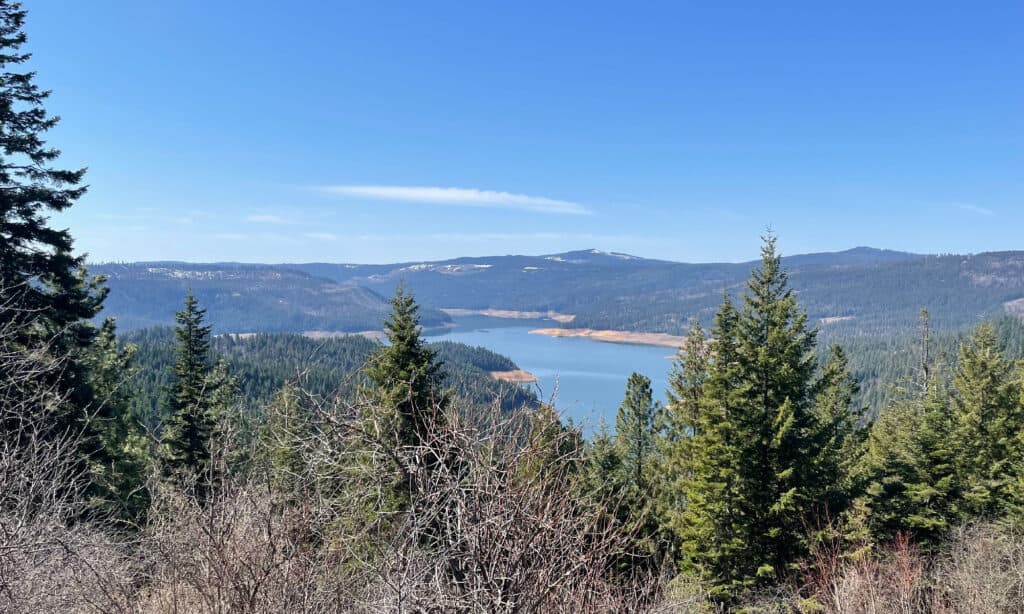
The Dworshak Dam is the third tallest dam in the United States.
©iStock.com/Kevin Henderson
The Dworshak Dam is a gravity dam located on the North Fork of the Clearwater River in Idaho. Although it’s not as famous as the others, the Dworshak Dam holds the record as the tallest straight-axis concrete dam in the entire Western Hemisphere.
Despite being the tallest straight-axis concrete damn, the Dworshak Dam is only the third tallest overall in the United States. It stands 717 feet high and impounds the Dworshak Reservoir, acting as flood control and a power generator.
Glen Canyon Dam (710 feet)
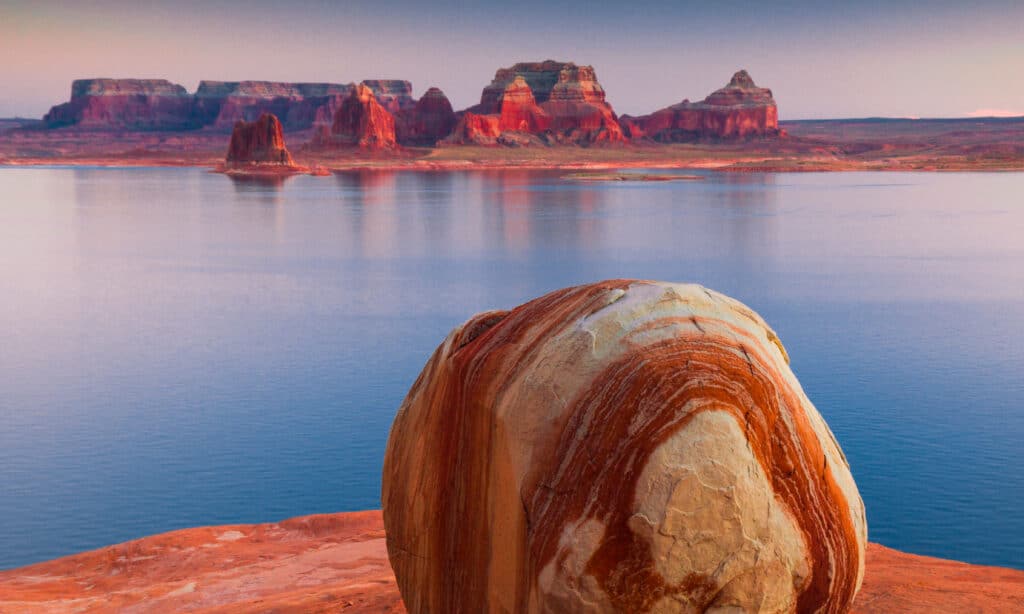
The Glen Canyon Dam filled sandstone canyons, creating Lake Powell.
©iStock.com/Lucas Cometto
The Glen Canyon Dam is a large dam located on the Colorado River in the northern part of Arizona. The creation of the dam in 1966 allowed Lake Powell to form, one of the most important artificial reservoirs across the entire country.
The Glen Canyon Dam is the fourth tallest dam in the United States, sitting at 710 feet high. It is one of the most recent dams to be built in the United States.
New Bullards Bar Dam (645 feet)
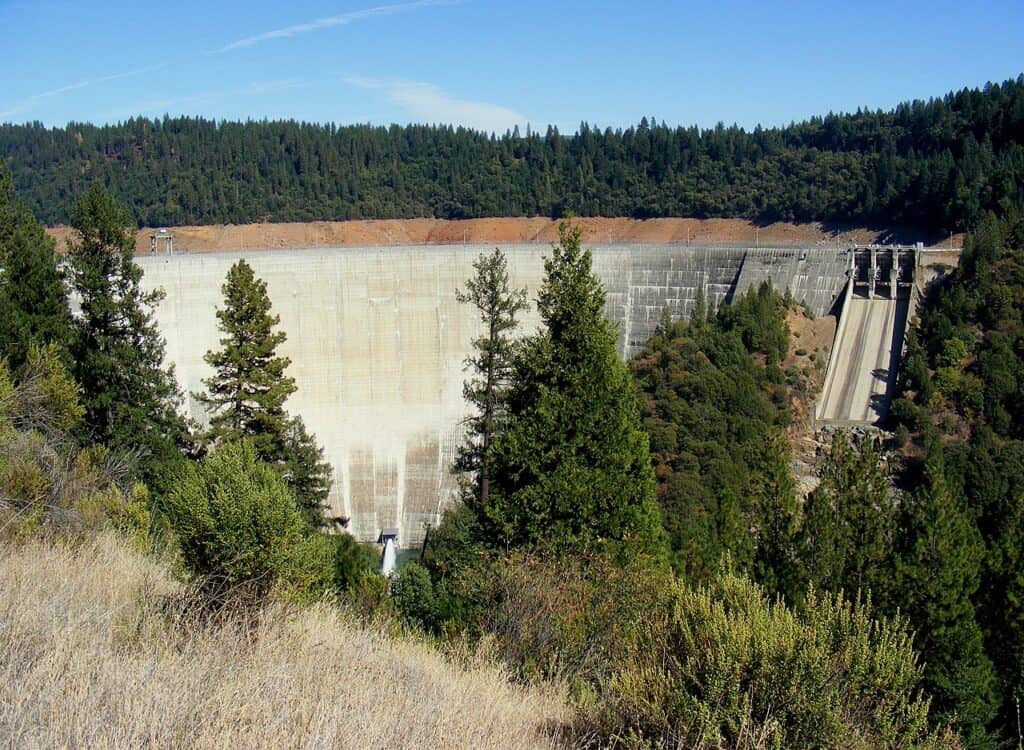
New Bullards Dam is only a few miles to the southeast of the Oroville Dam in California.
New Bullards Bar Dam is a radius concrete arch dam located slightly southeast of the Oroville Dam. This dam is important for Southern California, much like the Oroville Dam. It was completed in 1969 and was the fourth and final dam built in the area. Other diversion dams were built before, some as early as 1899.
The New Bullards Bar Dam is the fifth tallest in the United States, standing at 645 feet tall.
The Top 5 Dams By Water Capacity
Hoover Dam (8.95 cubic miles)
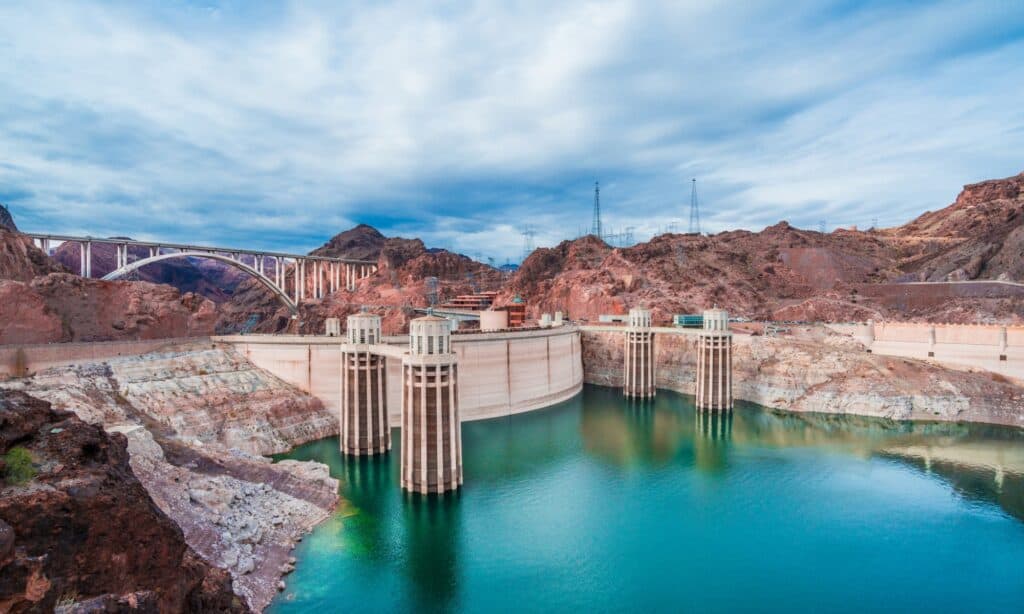
The Hoover Dam creates Lake Mead, the largest artificial reservoir in the United States.
©iStock.com/superjoseph
The Hoover Dam is the second tallest in the United States but is the first regarding the amount of water it holds back. Situated on Lake Mead, the Hoover Dam holds 8.95 cubic miles of water back at a time, a truly astonishing amount of weight. Lake Mead is one of the most important reservoirs in the country and is the largest in the US when measured by water capacity. Currently, Lake Mead is under severe drought watch and could drop so low it threatens the operation of the entire dam system.
Glen Canyon Dam (8.53 cubic miles)
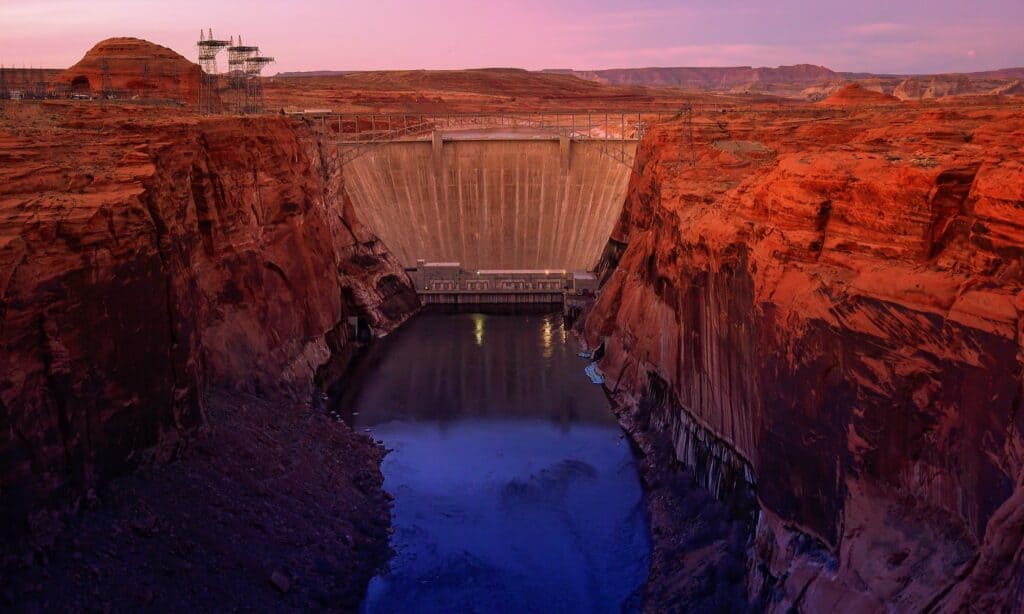
The Glen Canyon Dam holds back 8.53 cubic miles of water from Lake Powell.
©iStock.com/CrackerClips
The Glen Canyon Dam is also on our top 5 list again, only this time, it’s in second place. This large dam is incredibly important and was constructed to help with the rapid population transfer to the West Coast in the 1950s. The Glen Canyon Dam holds back 8.53 cubic miles of water from Lake Powell, the second-largest man-made reservoir in the United States.
Garrison Dam (7.05 cubic miles)

The Garrison Dam is the fifth-longest earth-fill dam in the entire world.
The Garrison Dam makes its way to third on our list by capacity, without being one of the tallest. This dam is located on the Missouri River in central North Dakota. This dam is an earth-fill embankment and is over two miles long. By length, it’s the 5th largest earthen dam in the entire world.
The Garrison Dam impounds Lake Sakakawea and holds a total of 7.05 cubic miles of water.
Oahe Dam (6.98 cubic miles)

Lake Oahe and the Lake Oahe Dam generate enough power for most of the north-central United States.
©iStock.com/Chaden Roggow
The Oahe Dam is similar to the Garrison Dam in that it’s a large earthen dam on the Missouri River; only this one is in South Dakota. This dam creates the artificial reservoir, Lake Oahe, giving it its name (borrowed from the Lakota Sioux). The electric power generated from the Oahe Dam provides power for a large portion of the north-central United States, using 6.98 cubic miles of water to do it.
Fort Peck Dam (5.52 cubic miles)

Fort Peck Dam is the highest dam of six, located on the Missouri River.
©iStock.com/bobloblaw
The Fort Peck Dam is the highest dam along the Missouri River, although not high enough to make it on our “tallest dams” list. Still, this large structure holds 5.52 cubic miles of water and is situated in northeast Montana. The Fort Peck Dam is the largest hydraulically filled dam in the US and creates Fort Peck Lake, the fifth largest artificial lake in the US.
Summary of the 10 Largest Dams In The United States
These are the largest dams in the United States, listed by greatest height or water capacity. The Hoover Damn is first in water capacity and second in height – making it the overall largest.
| # | Dam | Size |
|---|---|---|
| Top 5 Dams By Height | ||
| 1 | Oroville Dam | (770 feet) |
| 2 | Hoover Dam (726 feet) | (726 feet) |
| 3 | Dworshak Dam | (717 feet) |
| 4 | Glen Canyon Dam | (710 feet) |
| 5 | New Bullards Bar Dam | (645 feet) |
| Top 5 Dams By Water Capacity | ||
| 1 | Hoover Dam | (8.95 cubic miles) |
| 2 | Glen Canyon Dam | (8.53 cubic miles) |
| 3 | Garrison Dam | (7.05 cubic miles) |
| 4 | Oahe Dam | (6.98 cubic miles) |
| 5 | Fort Peck Dam | (5.52 cubic miles) |
Thank you for reading! Have some feedback for us? Contact the AZ Animals editorial team.








